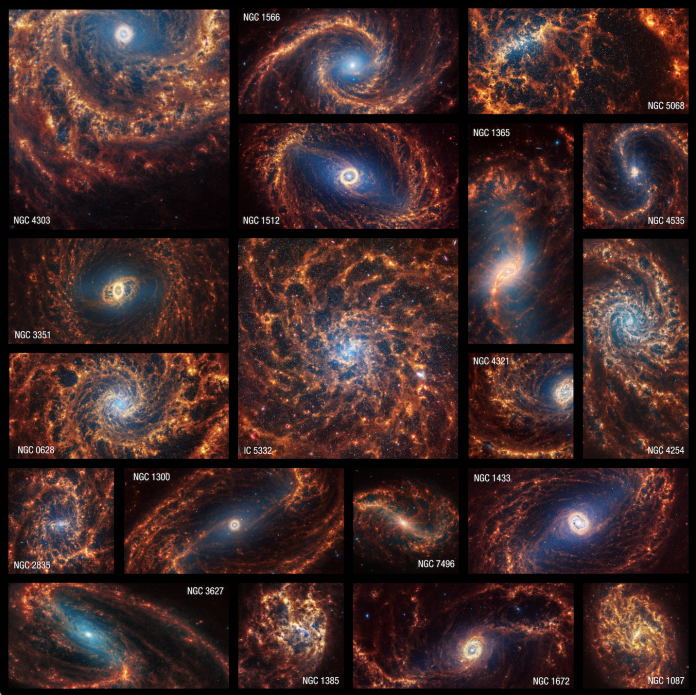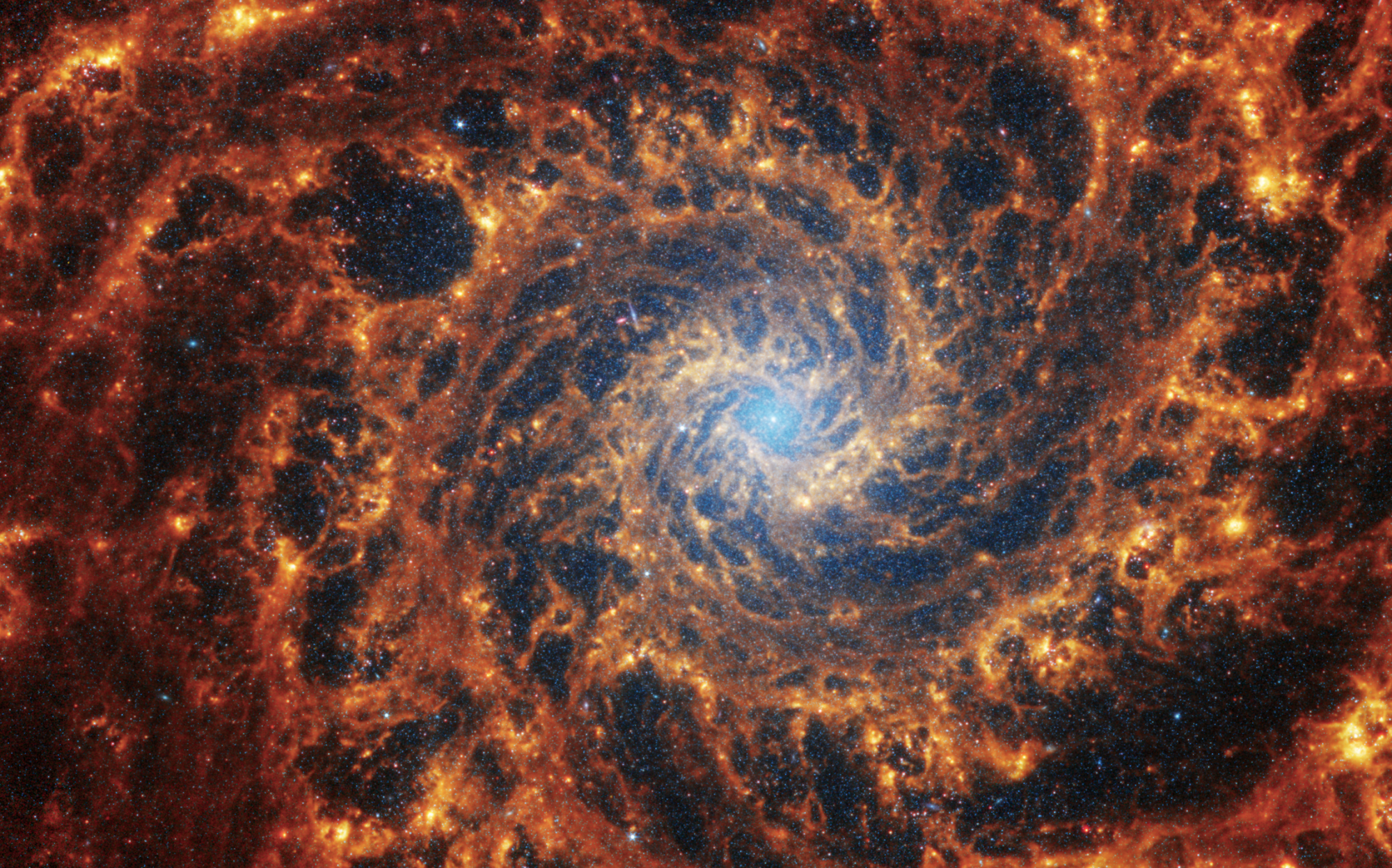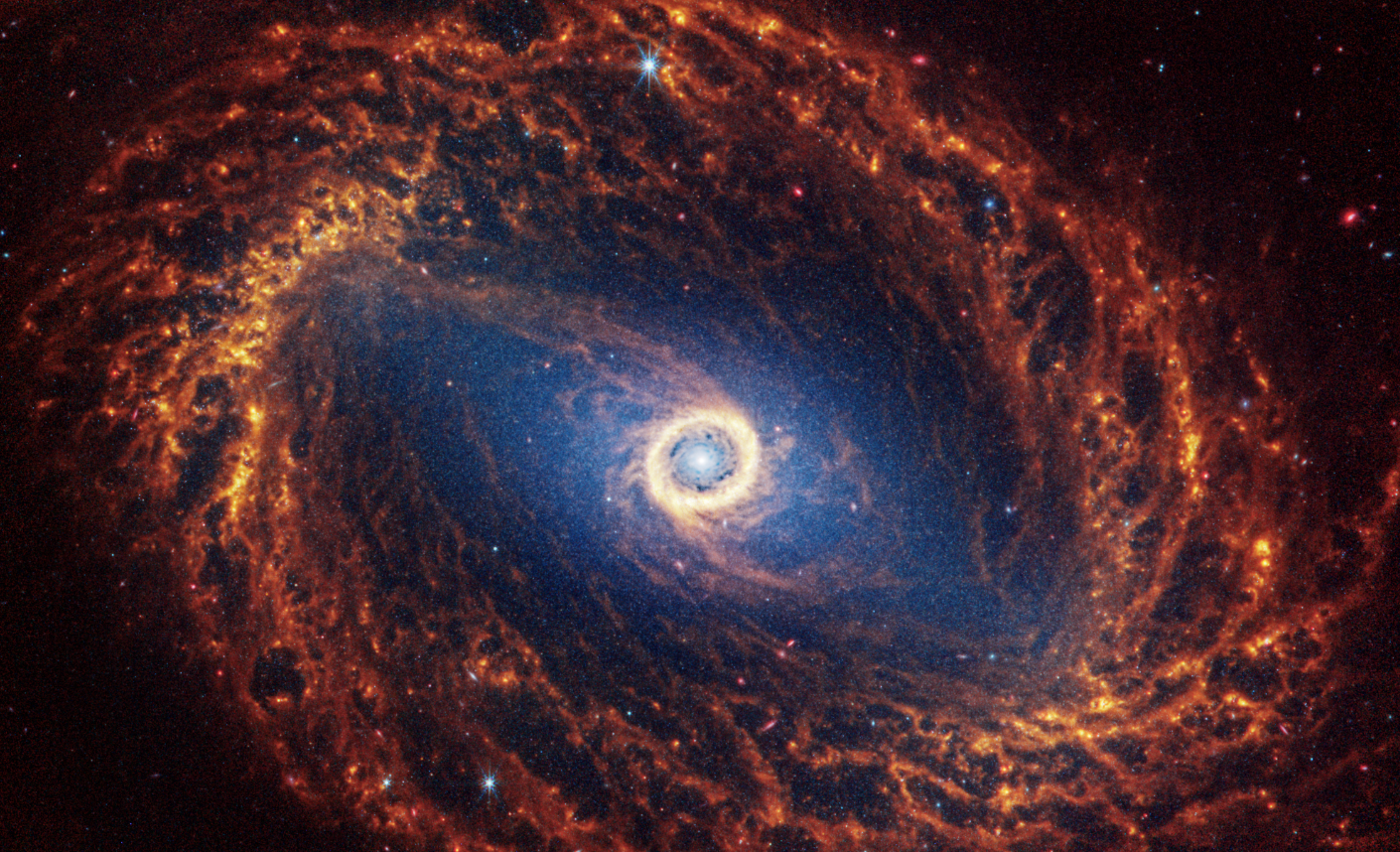
NASA’s James Webb Space Telescope has revealed fascinating images, offering an unprecedented glimpse into the heart of nearby spiral galaxies
The images are part of the Physics at High Angular Resolution in Nearby GalaxieS (PHANGS) program, a collaborative effort involving over 150 astronomers globally.
“Webb’s new images are extraordinary,” said Janice Lee, a project scientist for strategic initiatives at the Space Telescope Science Institute in Baltimore, according to NASA.
“They’re mind-blowing even for researchers who have studied these same galaxies for decades. Bubbles and filaments are resolved down to the smallest scales ever observed, and tell a story about the star formation cycle.”
The James Webb Space Telescope going above and beyond yet again
Capturing galaxies in near- and mid-infrared light, Webb’s images surpass Hubble and other telescopes.
The telescope’s Near-Infrared Camera (NIRCam) paints a vivid portrait, showcasing millions of stars sparkling in blue tones across the clearly defined arms of the spiral galaxies.
Some stars are scattered throughout the arms, while others cluster tightly in star formations, revealing the intricate dance of cosmic forces.

NASA, ESA, CSA, STScI, Janice Lee (STScI), Thomas Williams (Oxford), PHANGS Team, Elizabeth Wheatley (STScI)
Mid-Infrared Instrument
Webb’s Mid-Infrared Instrument (MIRI) data spotlights glowing dust, unveiling regions where stars are still forming, encased in the gas and dust that nurture their growth.
The images also unveil large, spherical shells in the gas and dust, possibly created by exploding stars that carved out colossal voids in the interstellar material.
One of the most surprising revelations is the identification of extended regions of gas in red and orange hues along the spiral arms. Described as cosmic waves, the spacing of these structures provides crucial insights into how galaxies distribute their essential elements—gas and dust—affecting the processes of star formation.

Patterns within the galaxy
The telescope’s sharp gaze into the interior of galaxies reveals a captivating pattern. Star formation commences at the core and spirals outward along the arms. Older stars populate the regions near the galaxy’s core, appearing as if illuminated by a blue spotlight, while younger stars take centre stage further out.
SoWebb’s images show large, spherical shells in the gas and dust. In conversation with NASA, Adam Leroy, a professor of astronomy at the Ohio State University in Columbus, stated, “These holes may have been created by one or more stars that exploded, carving out giant holes in the interstellar material.”
Active black holes
Galaxy cores adorned with pink-and-red diffraction spikes signal the possible presence of active supermassive black holes. Eva Schinnerer, a staff scientist at the Max Planck Institute for Astronomy, notes that these visual cues may indicate intense star clusters saturating the galaxy’s central regions.
100,000 star clusters
The PHANGS team has shared these images with the public and released a catalogue featuring approximately 100,000-star clusters. The data provides an extensive playground for researchers, allowing for the precise cataloguing of stars and developing a more comprehensive understanding of their life cycles.










